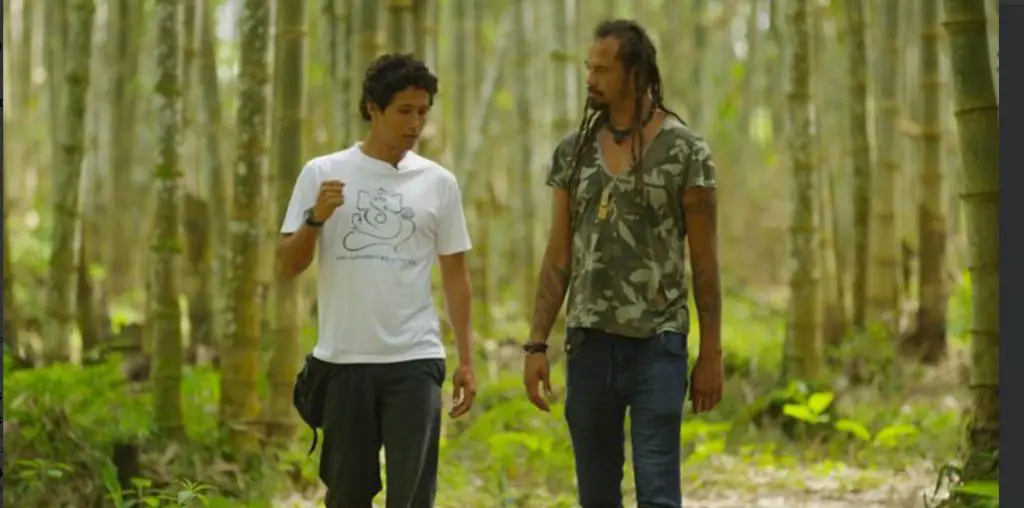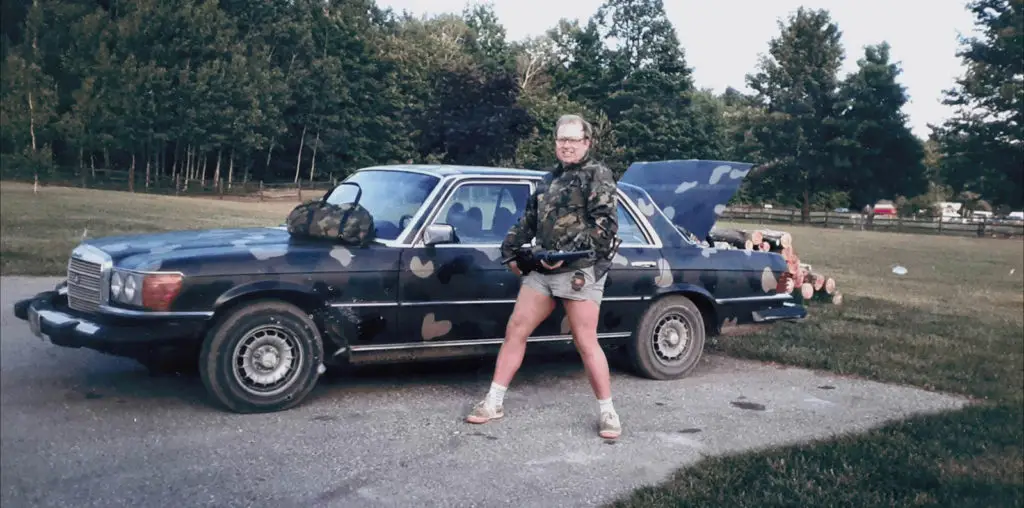
BOOTLEG FILES 271 “Inchon” (1982 Korean War drama starring Laurence Olivier and Jacqueline Bisset).
LAST SEEN: We cannot confirm the last public screening of this film.
AMERICAN HOME VIDEO: None.
REASON FOR BOOTLEG STATUS: It has not been commercially released for home entertainment viewing.
CHANCES OF SEEING A COMMERCIAL DVD RELEASE: It may be possible at some point, but don’t hold your breath.
Last summer, I purchased a bootleg DVD of the 1982 flop “Inchon,” with the purpose of reviewing the film for this column. However, I put off watching that DVD for months, simply because I had little enthusiasm of spending my time with a film that has a reputation for being among the worst ever made.
Well, I finally got around to watching “Inchon” and I was genuinely surprised – this is hardly among the very worst films of all time. That’s not to say it is a good film. It is a dull and forgettable movie, and I would never recommend it. However, its reputation for being among the bottom of the cinematic barrel is wholly undeserved.
So why do people think “Inchon” is such a piece of crap? The film’s lousy reputation stems from its creators: the Unification Church, also known as the Moonies (named in honor of Sun Myung Moon, the religion’s founder). Back in the late 1970s and early 1980s, there was an extraordinary level of fear and apprehension regarding the Moonies, who were seen as being among the most disreputable cults ever to corrupt the God-fearing world.
When “Inchon” was first released, the mania against the Moonies was at its highest pitch. Many people believed the film was being used to recruit new members to the faith, while others feared the box office profits would go to enrich the church coffers. In 1982, it was impossible to judge the film on its own merits because of the controversy surrounding its backers.
However, when viewed today without the corruptive influence of the negative publicity surrounding its creation, “Inchon” comes across as benign and boring movie. Had it not been for the brouhaha surrounding the Unification Church, no one would even bother to recall this production.
“Inchon” focuses on the start of the Korean War. North Korean tanks and hordes of running soldiers break across the 38th Parallel into South Korea. This creates a mass exodus of South Korean villagers who race to safety in the capital city of Seoul. Also in the exodus is Jacqueline Bisset, playing the wife of a U.S. colonel. She happens to be in a village at the 38th Parallel, where she is negotiating to purchase antique furniture. With her posh British accent and skin-tight, cleavage-bearing outfit, Bisset is not your stereotypical army officer’s wife. Nonetheless, she isn’t fond of the North Koreans and she gets into her chauffeured limousine en route to Seoul.
Meanwhile, her husband (played by Ben Gazzara) is in Seoul, trying to wrap up a love affair with a lovely young Korean lady. Her father, played by the great Japanese samurai star Toshiro Mifune (who is clearly not comfortable with his English dialogue), seems to approve of the affair. News of the invasion is relayed to colonel, who manages to hook up with an African American sidekick/sergeant (Richard Roundtree). They head north, looking for Jacqueline Bisset.
Over in Tokyo, a group of cynical journalists lead by David Janssen (wearing an anachronistic late 1970s haircut) is waiting for a press conference to be held by Gen. Douglas MacArthur. A new journalist joins their group – a somewhat campy music critic who is inexplicably assigned to cover serious news out of Tokyo. He’s played by Rex Reed, who is clearly playing himself (but not playing with himself, as he did in “Myra Breckinridge”).
But the general never shows up – he’s at home in Tokyo with his wife and dog. The general, by the way, is played by Laurence Olivier wearing one of the most unconvincing make-up jobs ever slapped on a prime thespian. MacArthur happily agrees with his wife that he is the only person who can save South Korea from the Commie invaders.
In case you were wondering where the Koreans were in this story, there are two subplots. One involves a young couple whose wedding plans are torn asunder when they are separated during the chaos of the invasion. The other involves a group of Korean kids who climb into Jacqueline Bisset’s car – she winds up driving them to safety (her chauffeur gets killed during the North Korean attack, so she has to hit the gas).
Will Ben Gazzara and Richard Roundtree find Jacqueline Bisset? Will Jacqueline Bisset get those Korean kids to safety? Will David Janssen stop cracking bad jokes at MacArthur’s expense? Will Laurence Olivier convince anyone he is really Gen. MacArthur? Will Toshiro Mifune master English? Will Rex Reed stop acting like Rex Reed? And will anyone do something about those annoying North Koreans? If you manage to stay all the way to the closing credits of “Inchon,” you will find the answers.
In fairness, the Moonie backers of “Inchon” did not cut corners with this production. They went out of their way to get genuine talent behind the camera. Terence Young, who directed the early James Bond epics, was hired to helm the project. Robin Moore, the novelist who wrote “The Green Berets” and “The French Connection,” co-wrote the screenplay. Oscar-nominated cinematographer Bruce Surtees and Oscar-winning composer Jerry Goldsmith were also part of the project.
In concept, it made sense to recruit Laurence Olivier – arguably, the world’s greatest actor – to star in the film. However, Olivier was at a career nadir and was eagerly accepting well-playing roles without bothering to provide genuine performances. Instead of capturing the complex nature of the celebrated general, his MacArthur engages in so much eye-rolling and grimacing that it seems he is on the constant verge of cardiac arrest. In fact, he’s more campy than Rex Reed!
Outside of Olivier’s nonsense, why didn’t the film work? The cliché-riddled screenplay was a weak foundation (it felt like a hodgepodge of 15 other war-related films) and the dull line readings by the cast proved they clearly had no emotional interest in the material. The movie also kept cutting to scenes of North Korean massacres of South Korean peasants – thus, every few minutes there was footage of dozens of extras flailing around after being machine gunned to death. The genuine tragedy of the invasion was, thus, diluted by the repetition of the imagery.
Unfortunately for the Moonies, word got out that the film wound up costs upwards of $50 million – for 1982, that was a monster sum (the notorious “Heaven’s Gate,” released in 1980, cost $40 million). That inflated price tag did not help the film’s PR. A poor reception at the Cannes Film Festival scared off U.S. distributors, and the Unification Church had to enter a service deal with MGM/UA in order to get the film into U.S. cinemas. It was never reported how much MGM/UA was paid for its services.
“Inchon” opened to blistering reviews. Jack Kroll of Newsweek and Peter Rainer of the Los Angeles Herald-Examiner called the film the worst ever made, while Peter Canby of the New York Times dubbed it the most expensive B-movie of all time. Audiences boycotted the film and its theatrical release was brief. Outside of being recalled at the Razzie Awards (it won Worst Picture, Actor, Director and Screenplay), the film literally vanished after its brief U.S. run. To date, it never played in any other theatrical market and was never commercially released in any home entertainment format.
In the early part of this decade, however, “Inchon” quietly turned up on Goodlife Television Network (now called AmericanLife TV), a minor U.S. cable TV outlet owned by the Unification Church. Bootleg copies of “Inchon” originated from these broadcasts, complete with the Goodlife logo in the lower right corner of the screen.
“Inchon” is not the wacky turkey that everyone claimed back in 1982. It is just a monotonous bit of noise and fury. No lost classic here – just a boring flick that is better left to slumber quietly in well-deserved oblivion.
IMPORTANT NOTICE: The unauthorized duplication and distribution of copyright-protected material, either for crass commercial purposes or profit-free s***s and giggles, is not something that the entertainment industry appreciates. On occasion, law enforcement personnel boost their arrest quotas by collaring cheery cinephiles engaged in such activities. So if you are going to copy and distribute bootleg videos and DVDs, a word to the wise: don’t get caught. Oddly, the purchase and ownership of bootleg videos is perfectly legal


I’d agree with you, not as bad as it’s said to be. Great production values, a good cast, but poorly paced. There was no sense of momentum. Most of the history was correct. No shortage of bodies being shot to ribbons by the invading North Koreans. “Inchon” tried to cover too much territory. I prefer “Battle for Inchon: Operation Chromite” (2016) with Liam Neeson doing his impersonation of General Mac.
Where can I get a copy?
It should be noted that the scenes with David Jannsen and Rex Reed were not in the version that played in US cinemas. The film sat on the shelf for a couple of years, and apparently the distributor was afraid that Jannsen’s scenes would give this away (he had died in the interval).